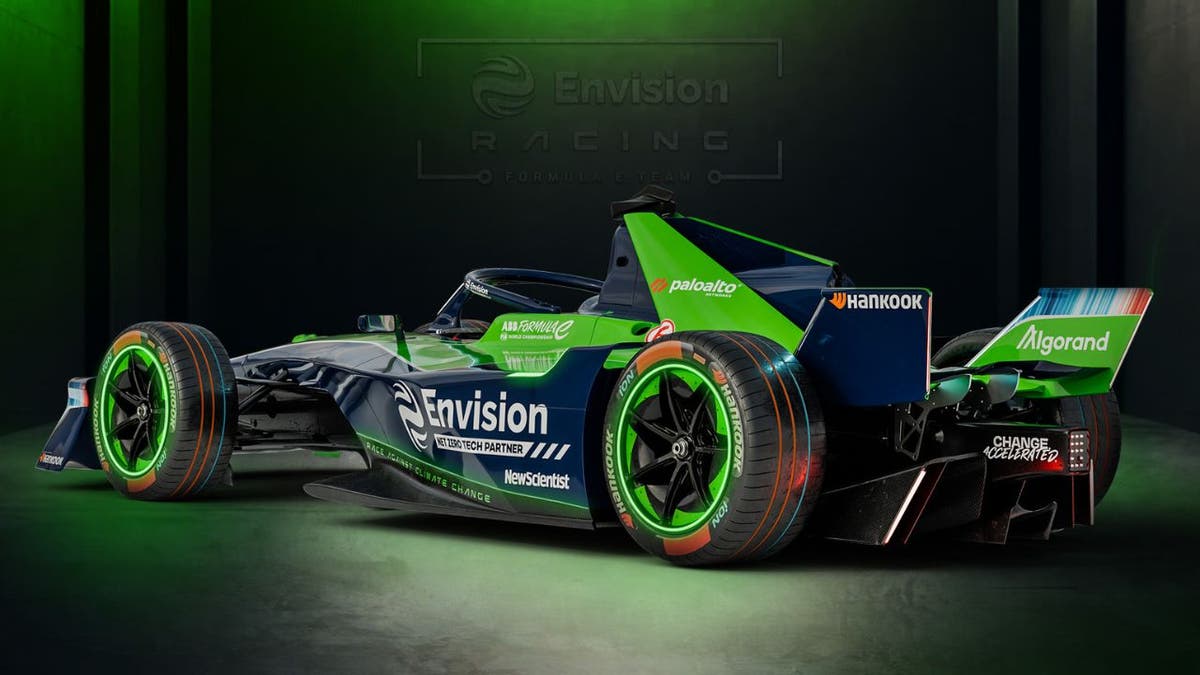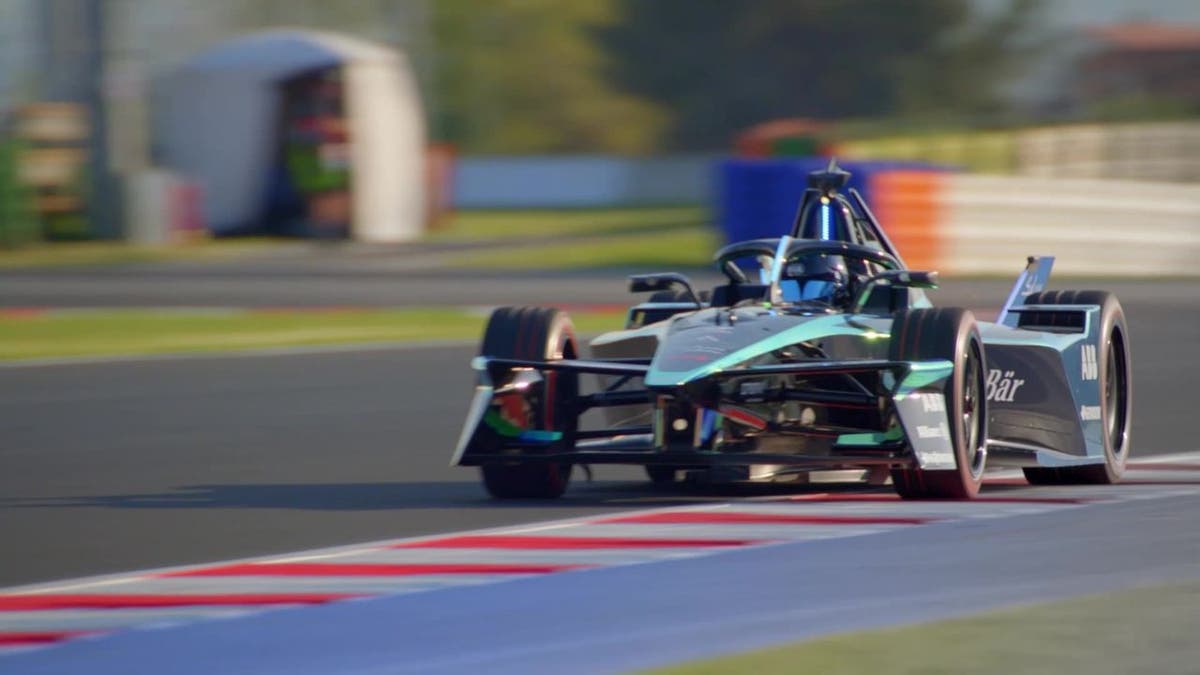I can’t think of anything permeating mainstream camera culture as aggressively as the DJI Osmo Pocket 3. The Fujifilm X100VI has stolen some of its thunder among film simulation enthusiasts, but DJI’s still having somewhat of a cultural moment on YouTube, Instagram, and the troubled TikTok by spurring all sorts of creator glee.
Technology
How scammers have sunk to a new low with an AI obituary scam targeting the grieving

As if scammers couldn’t sink any lower, there’s a new online scam taking advantage of grieving people.
It’s a strange pirate scam that uses artificial intelligence to scrape data to build fake obituary websites, exploiting the information of somebody who is deceased in an attempt to scam vulnerable victims.
Grieving woman at a grave site. (Kurt “CyberGuy” Knutsson)
We can only hope that this unfortunate situation doesn’t affect you or anyone you care about. If, unfortunately, you have died, there’s little you can do to prevent someone from exploiting your obituary for their own gain. However, these scammers specifically target kind-hearted individuals who are still alive and willing to assist grieving families. It’s essential to remain vigilant and protect yourself and your loved ones from such deceptive practices.
CLICK TO GET KURT’S FREE CYBERGUY NEWSLETTER WITH SECURITY ALERTS, QUICK VIDEO TIPS, TECH REVIEWS AND EASY HOW-TO’S TO MAKE YOU SMARTER

Grieving woman sitting on the floor. (Kurt “CyberGuy” Knutsson)
MORE: HOW IMPOSTERS ARE TRYING TO EXPLOIT YOUR GRIEF AND WALLET IN A NEW FUNERAL SCAM
How the fake obituary or ‘bereavement scam’ works
Have you ever been on your social media account and seen someone post an obituary page of someone they have lost? Perhaps you’ve clicked on the links to learn about the person, their impact, how they’ve passed or to read the information regarding the funeral.
Maybe you’re even looking to send flowers to the family or a donation in the person’s name. Of course, when someone dies, the last thing you’re probably thinking about is whether it could be a scam. But there’s been a rise in bereavement scams by heartless scammers.
Monitoring search trends
Scammers do this by first monitoring Google search trends to determine when people are searching for obituaries after a death.
WHAT IS ARTIFICIAL INTELLIGENCE (AI)?
Creating bogus obituaries
Then, once the scammers find out who has died, they create bogus obituaries with the help of AI that are hosted on legitimate funeral/memorial websites.
SEO optimization
Next, the scammers optimize these pages using SEO tactics so that the scammer’s page ranks first when someone searches for a specific person’s obituary page.
The trap is set
Then, when the prospective victim goes to click on it, they’ll be redirected to an e-dating or adult entertainment site, or they’ll be given a CAPTCHA prompt that, unbeknownst to them, will install web push notifications or pop-up ads when clicked.
These may give fake virus warnings but link to legitimate landing pages for subscription-based antivirus software programs. Worrying that you might accidentally download a virus, innocent victims instead walk right into a scam.
The scammers profit in two ways
After this, two things can happen:
- Scammers monetize this via affiliate reward programs from software downloads people are tricked into thinking they need.
- Scammers get revenue from adverts on the page that pay per impression.
So, while they may not explicitly target you in the same fashion as other scams, they’re still quite creative. Although Secureworks Counter Threat Unit emphasizes that this scam is not currently infecting devices with malware, it is possible that this scam could evolve in that direction in the near future.

Grieving woman on her cellphone. (Kurt “CyberGuy” Knutsson)
MORE: HOW TO ENSURE YOUR PASSWORDS DON’T DIE WITH YOU
How to protect yourself from falling for an obituary scam
To protect yourself from one of these scams, there are a few questions to ask yourself if you see an obituary page:
Do you have a connection to the person who has passed away? If you’re not connected in any way to the person you see the obituary page for, don’t click on it. And, if you do know the person, make sure you click on the original link that was shared on social media from the contact you know well; don’t search it in Google, as the first option that comes up could be a fake one.
Know the fake websites. Some fake obituary websites include Nextdoorfuneralhomes.com, Memorialinfoblog.com, Obituaryway.com and Funeralinfotime.com. But keep in mind that some scammers are using common sites, too.
Check if the person has actually passed away. This may seem obvious, but some of these scammers are writing obituaries for people who have not actually passed away!
Look out for suspicious pages. Key signs of a fake obituary include overly descriptive language and an impersonal tone. Many scammers rely on AI to write these obituaries as quickly as they can and don’t usually take the time to review them to make them sound more human. After all, they are in a rush to snag you shortly after the person has died.

A woman in a reflection. (Kurt “CyberGuy” Knutsson)
MORE: SCAMMERS ARE USING FAKE NEWS AND MALICIOUS LINKS TO TARGET YOU IN AN EMOTIONAL FACEBOOK PHISHING TRAP
Kurt’s key takeaways
Many scammers prey on emotionally vulnerable people to get their way. Though this obituary scam is next-level, it’s not much different than someone taking advantage of someone during a phone scam, where the victim is rushed to send over money or provide information. So, always keep your wits about you if you’re ever not sure. Before clicking on a link, opening a file or answering that phone call, take a minute.
What ethical responsibilities do online platforms and social media networks have in safeguarding you from exploitative scams? Let us know by writing us at Cyberguy.com/Contact
For more of my tech tips & security alerts, subscribe to my free CyberGuy Report Newsletter by heading to Cyberguy.com/Newsletter
Ask Kurt a question or let us know what stories you’d like us to cover.
Answers to the most-asked CyberGuy questions:
Copyright 2024 CyberGuy.com. All rights reserved.

Technology
The DJI Pocket 3 is almost everything I wanted my iPhone camera to be
/cdn.vox-cdn.com/uploads/chorus_asset/file/25441475/DJI_Osmo_Pocket_3_Kennemer_6.jpg)
Of course, the camera buffs are all over it, but serious and casual creators from other genres have paused their usual programming to rave about how it transcends amateur vlogging pursuits, whether you’re filming a wedding or self-shooting a scene for a Sundance-hopeful short film.
Some of us at The Verge are excited, too: Vjeran liked it enough to call it his favorite gadget of 2023, and Sean just bought one after using it to elevate his Today I’m Toying With videos.
I felt tingles about the $519 Osmo Pocket 3 when DJI first announced it, but it wasn’t until I purchased a Creator Combo that I fully understood the hype. The video quality often comes close to my full-frame Sony mirrorless (although I can’t get all the same shots) and is very noticeably better than my phone.
The original Osmo Pocket and Pocket 2 couldn’t make those boasts, but the Pocket 3 is a cut above. Its larger one-inch-equivalent sensor is now bigger than those in most phones, with better low-light performance and more reliable autofocusing than predecessors. It has a much bigger display, longer battery life, faster charge time, more microphones — the list goes on like that for nearly everything that makes it tick.
Photo: Quentyn Kennemer / The Verge
My first heavy outing with the Pocket 3 was at a WWE SmackDown show at the American Airlines Center in Dallas. Without a photographer’s pass, I couldn’t enter the venue with my Sony A7 IV or anything else bigger than pocket-sized. But the Osmo got in after I showed security that its battery grip wasn’t a selfie stick.
I’d gone with the simple hope of capturing some good stabilized audience point-of-view footage that might look a touch better than what my iPhone 12 Pro Max produced at the last show I attended. I left with clips that look so good that I could see them appearing in WWE’s social media reels or pre-match hype promos.
The Pocket 3 was better at capturing the majesty of the heavy light rays and pyrotechnic embers that define WWE’s grand productions than my iPhone, and its microphones did a better job at taming the loud audio levels without overly dampening the sound and stripping it of acoustic character. The footage was also considerably less hazy compared to the iPhone’s, with smoother stabilization, though the iPhone’s software stabilization compared decently.
Even if I could have brought a mirrorless or DSLR, the Osmo let me live more in the moment. I had a large popcorn and a cold one occupying one hand for most of the night, so I’d have been miserable trying to adjust dials and deep-dive menus. With the Pocket 3, powering it on is just a matter of swiveling open the display. The record button’s right under your thumb, and settings are a single swipe away.
The Pocket 3 has its limitations. It can only manage a 2X-equivalent digital zoom, for starters. That’s enough to capture impromptu closeups — like then-WrestleMania-bound Cody Rhodes looking into the rafters after he walked right past my seat, for example. But you won’t be able to achieve the dreamy, bokeh-heavy images reserved for interchangeable lens cameras.
Meanwhile, my iPhone’s telephoto sensor offered better reach at a Monday Night Raw show in October. I sat in the same exact seat at both shows, with a great view of the ring and decent visibility of the entrance stage from the first row of the risers. My iPhone gave me clear face shots of Becky Lynch and Damian Priest’s entrances, even if I greatly preferred the overall color, clarity, and exposure of the Osmo during the SmackDown show.
I’ve shot a number of personal videos since SmackDown and spent a fair bit of time comparing my footage to my Sony and iPhone results. Compared to my phone, colors don’t look overly muddy and washed out in low light, and there’s far less noise. I get more leeway to push and pull colors in post-process when shooting in D-Log M. (Though, that might be a wash if I had an iPhone 15 Pro with a similarly flexible ProRes Log color profile.)
Even in well-lit scenarios, there’s still a decent gap: the bokeh on the Osmo Pocket 3, while subtle, is more noticeable and pronounced than the iPhone. It’s enough to draw the viewer’s eye to your subject while muting an otherwise distracting background.
Sean filmed the Transformer above with iPhone 14 Pro and Pocket 3 — you can probably tell which shot is which!
And it’s just so easy to use. Going from powered off to an effortlessly stabilized video is as simple as swiveling open the screen and hitting the record button right next to it, no separate multi-pound gimbal or balancing weights needed. Tap the screen to flip it into selfie mode, and it’ll automatically pan and tilt to keep your face in frame.
Most phones don’t let you use the higher quality sensor to record yourself while previewing your shot; here, you can frame your own walk-and-talking headshots on the two-inch OLED screen, then spin the same sensor around to capture viral content, short films, and the world’s beauty in front of you.
You can also fire up DJI’s smartphone app to remotely preview and control the entire camera over Bluetooth — and if you spring for the $669 Creator Combo, you get a high-quality wireless lav mic with 32-bit float recording that effortlessly integrates, too. The mic automatically connects to the Osmo as soon as you power it on, can record separately to its own internal storage, has both a clip and a strong magnet to keep it attached to clothing, vibrates in specific patterns so you know when you’re rolling, and can charge and transfer recordings over USB-C. (Plus, the combo comes with a nice extended battery grip, an iffy wide-angle lens, and other accessories.)
No, you won’t find the same shooting options that enthusiasts and professionals seek out of a proper camera body. You can adjust white balance, shutter, and ISO to varying degrees, but you don’t get advanced recording codecs, LUT previews, alternative metering modes, and the like. It’s not exactly comfortable to have in your pocket despite the name, and for still photography, I’d sooner grab my phone. Did I mention you should run like hell if you see a raindrop? There’s no waterproofing at all.
But everything about the Osmo Pocket 3 makes me want to get out and record because it’s fun and easy to do. It encourages the lazy part of my brain to stop whining. It narrows the gap for people who need an ultra-portable camera that can shoot better-looking footage than their iPhone and lightens the load for those who don’t need a more complex camera for every shoot. For me, right now, it’s up there with the wallet, keys, and phone as something I’ll always consider grabbing on my way out the door.
That’s remarkable for a camera that isn’t much larger than the average vape pen — and costs less than a new phone.
Technology
Lightning-fast Formula E race car does 0-60 in 1.82 seconds flat

Imagine a race car so fast it leaves the current Formula 1 vehicle in the dust. That’s the Gen3 Evo Formula E race car, the pinnacle of electric racing technology. With the ability to sprint from 0 to 60 mph in a blistering 1.82 seconds, this machine isn’t just setting new records; it’s shattering our expectations of what electric vehicles (EVs) can do.
CLICK TO GET KURT’S FREE CYBERGUY NEWSLETTER WITH SECURITY ALERTS, QUICK VIDEO TIPS, TECH REVIEWS AND EASY HOW-TO’S TO MAKE YOU SMARTER
Gen3 Evo Formula E race car (Envision Racing) (Kurt “CyberGuy” Knutsson)
A new era of performance
The Gen3 Evo isn’t just about raw speed. It’s a testament to the incredible advancements in EV technology, boasting a performance gain of approximately 2% from its predecessor. This translates to a qualifying lap around the Monaco circuit that’s nearly two seconds faster.
The secret? A combination of all-wheel drive (AWD) that’s available during the most intense moments of the race, an aggressive body kit for improved aerodynamics and Hankook iON tires that offer 5%-10% more grip using 35% recycled materials.

Gen3 Evo Formula E race car (Envision Racing) (Kurt “CyberGuy” Knutsson)
MORE: HOW A FORMULA E RACE CAR WAS BUILT ENTIRELY FROM RECYCLED ELECTRONIC WASTE
Sustainability at its core
But speed is only part of the story. The Gen3 Evo is the world’s only net-zero carbon race car in the first net-zero carbon sport. It’s not just racing; it’s racing with a conscience. The regenerative braking system is so efficient that it generates nearly 50% of the energy needed for a race during the race itself. With a motor efficiency of over 90% compared to the roughly 50% of internal combustion engines, the Gen3 Evo is all about efficiency.

Gen3 Evo Formula E race car (Envision Racing) (Kurt “CyberGuy” Knutsson)
MORE: IT’S A BIRD. IT’S A PLANE. NO, IT’S A FLYING JETSKI
Innovation for the future
The technological innovations don’t stop there. Formula E designed the Gen3 Evo with the future in mind, featuring ultra-fast charging capabilities that allow for a 30-second 600 kW high-speed charge mid-race. The power train and software engineering are continuously optimized, ensuring the car remains at the forefront of electric racing technology.
Envision Racing clinched the title of Formula E World Champions, winning the 2022-2023 season. This victory was particularly notable as it marked the debut of the GEN3 car, showcasing Envision Racing’s exceptional adaptability to cutting-edge technology in Formula E. As they gear up for the upcoming season, the team is diligently preparing to continue their success with the GEN3 Evo, aiming to set a new standard in electric motorsport excellence.

Gen3 Evo Formula E race car (Envision Racing) (Kurt “CyberGuy” Knutsson)
MORE: AI RACE CARS REPLACING HUMAN DRIVERS? AUTONOMOUS CAR RACING REVS UP
From track to road
Perhaps the most exciting aspect of the Gen3 Evo is its potential impact on everyday transportation. With a track-to-road transfer time of around 18 months, the innovations seen in the Gen3 Evo will soon make their way into the consumer market, accelerating the transition to zero-emission transportation. The Gen3 Evo Formula E race car proves that sustainability and high performance can go hand in hand.

Gen3 Evo Formula E race car (Envision Racing) (Kurt “CyberGuy” Knutsson)
Kurt’s key takeaways
The Gen3 Evo Formula E race car is more than just a speed demon. It’s a trailblazer for sustainable racing. With lightning-fast acceleration, net-zero carbon emissions and a road map for future electric vehicles, it’s a powerful symbol of what’s possible when performance and environmental consciousness collide.
How might the Gen3 Evo Formula E car’s breakthroughs in electric vehicle technology influence your personal choices in transportation? Let us know by writing us at Cyberguy.com/Contact.
For more of my tech tips and security alerts, subscribe to my free CyberGuy Report Newsletter by heading to Cyberguy.com/Newsletter.
Ask Kurt a question or let us know what stories you’d like us to cover.
Answers to the most asked CyberGuy questions:
Copyright 2024 CyberGuy.com. All rights reserved.
Technology
The Gamma app brings PS1 emulation to the iPhone
/cdn.vox-cdn.com/uploads/chorus_asset/file/25444148/IMG_4573.PNG)
iPhone users without a penchant for jailbreaking can finally enjoy the blocky polygons and shifty textures of the original PlayStation with Gamma, a free PS1 emulator that hit the iOS App Store last night. Gamma comes courtesy of developer ZodTTD, which has been creating emulators for the iPhone since the earliest days of third-party iOS apps.
The app has both iPhone and iPad versions with support for Bluetooth controllers and keyboards, as well as customizable on-screen controller skins. It uses Google Drive and Dropbox syncing for backing up your game files and save states (those are the snapshots you can save at any time and reload, a little like pausing your game — great for old-school games that don’t let you save any time you want). Like the Delta emulator that ruled the App Store’s top free apps list for weeks before being unseated by free donuts, the app will also go grab game cover artwork for you automatically.
The default skin for landscape orientation is mostly transparent and hard to see, though, so you’ll want to replace that when you can.
Thankfully, Gamma doesn’t require you to go find any BIOS files to run PS1 games. That said, I had trouble running the first two games I tried — NASCAR 98 and Shrek Treasure Hunt. But that may have just been the game files I was using, as I could run Oddworld: Abe’s Oddysee just fine. Third time’s the charm, right?
According to Gamma’s App Store page, it collects identifiers that can be used to track you, and may collect location and usage data. For what it’s worth, the app didn’t trigger a location data access request for me, nor did it prompt me for tracking permission (though it did do so for my colleague, Sean Hollister).
Benjamin Stark, aka ZodTTD, has been around the block. Stark pointed out to The Verge via email that Delta developer Riley Testut’s first iOS emulator, GBA4iOS, borrowed code from an emulator Stark had made called gpSPhone (something Testut wrote about in 2013). But even that app, Stark said, was based (with permission, he added) on gpSP, an Android emulator created by a developer called Exophase.
That tradition continues with Gamma, which Testut told The Verge via email is “based off Delta’s codebase (excluding the actual PSX core),” adding that “ZodTTD has my full permission to do that.” Testut said Stark is “the reason I started developing emulators in the first place.”
Update May 12th, 11:36AM ET: Added additional context and details shared by Gamma developer Benjamin Stark.
Update May 12th, 2:10PM ET: Added comment from Delta developer Riley Testut.
-

 World1 week ago
World1 week agoBrussels, my love? Champage cracked open to celebrate the Big Bang
-

 Politics1 week ago
Politics1 week agoAustralian lawmakers send letter urging Biden to drop case against Julian Assange on World Press Freedom Day
-

 Education1 week ago
Education1 week agoHow Counterprotesters at U.C.L.A. Provoked Violence, Unchecked for Hours
-
News1 week ago
A group of Republicans has united to defend the legitimacy of US elections and those who run them
-

 Politics1 week ago
Politics1 week agoHouse Dems seeking re-election seemingly reverse course, call on Biden to 'bring order to the southern border'
-

 World1 week ago
World1 week ago‘It’s going to be worse’: Brazil braces for more pain amid record flooding
-

 Politics1 week ago
Politics1 week ago'Stop the invasion': Migrant flights in battleground state ignite bipartisan backlash from lawmakers
-

 Politics1 week ago
Politics1 week agoDemocratic Texas Rep. Henry Cuellar indicted by DOJ on conspiracy and bribery charges














